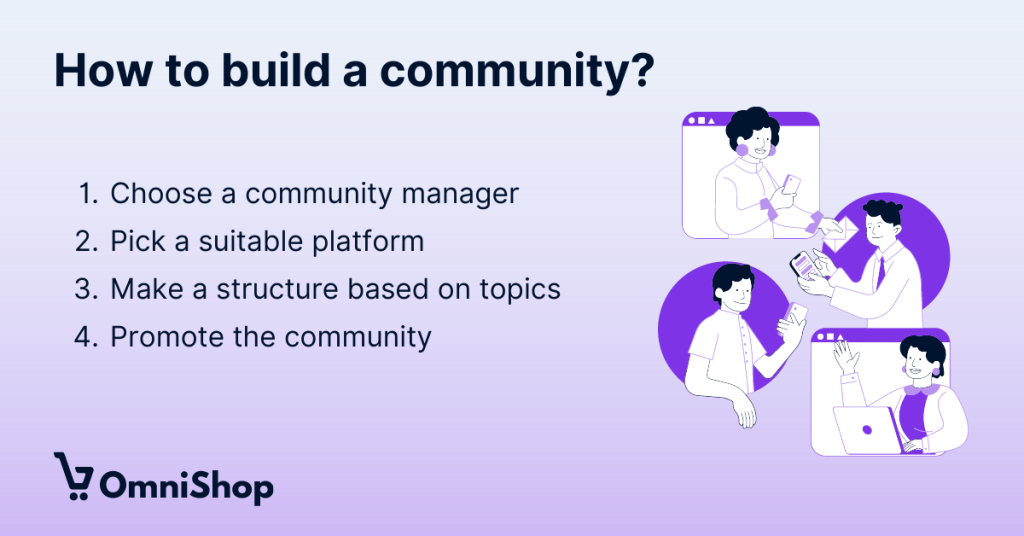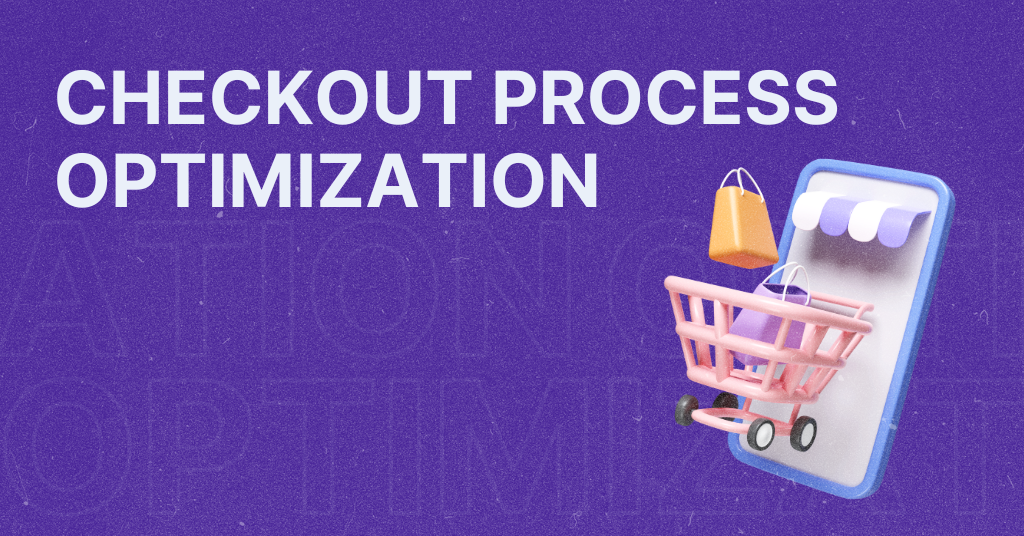
How to build a community and win new loyal customers?
Are you worried that the number of your customers is going to decrease? That no one will visit your new website or download your app?
Do you fear a customer will hit a like on that fabulous dress but won’t add it to the cart? Are you struggling to get customers for your new product? It’s fresh on the overcrowded market and still hasn’t reached people, although they will surely fall in love with it.
This article is for you if you can relate to the questions above. Here we will talk about how to build a community to gain more customers and grow your business.
What is a community?
Humans have always had the urge to belong to a group. It is in our nature to make long-term connections with others. That is because we are looking for support.
For centuries people have been making physical communities. But in the 21st century, virtual communities are even more popular.
The principle is the same – we have the same goals or problems, so why don’t we gather to talk about it? Maybe we can even work together to achieve those goals? Or solve those problems?
Long story short, a community is a group of people that get together around the same topic they want to discuss. Here they get valuable information and share what they know with others.
Benefits of a community
Now, you are probably asking yourself: “Why would I care about this community thing? It’s not like it will help me sell more products.” Well, here you are wrong. Although it is underrated, the community is one of the best marketing strategies you can use on the internet to increase your profit.
The beauty of community is that it is not a pure profit-driven feature of your brand. It is much more than that. It has a human touch. Community is going to be beneficial for both your business and group members. If you are patient and treat them right, group members will emerge as your loyal customers.
Members benefit in a few aspects
First, they finally reach someone who will hear them out and allow them to get involved in getting the solution they need. They get the freedom to ask questions in a space where they know they will get the answer. Here, members meet their needs. And on the one hand, to many users, these groups are places for socialization with people who think similarly to them.
Your business will benefit
Businesses can profit from the information that circulates in a community. Here you have the best sample size of your ideal customer’s profile. Following happenings in the community, you get to learn people’s perspectives and pain points. Based on that, you can adjust your product or service.
Building a community allows you to build trust with your audience. When they see how engaged you are in listening and hearing them, it will influence them to be loyal to your company. Also, you will benefit from the community as your average order value (AOV) will increase, and at that exact time, acquisition costs (CAC) will drop. To simplify, your products will advance, support costs will be lower, and sales will increase.
Both sides benefit from the community
Community is the space to exchange ideas, experiences, and build mutual support and gain new knowledge. So, it all leads to collective growth. You’ll get a base of people obsessed with your brand and what it can offer. Also, constant customer feedback loops will get you an improved product. You’ll make personal bonds with current customers that will free-willingly start spreading the word about your excellent brand to others. This will drive sales up. Research from the University of Michigan states that people spend 19% more on a brand after joining its online community.
Voilà! Those were precisely the things you wanted. Remember that this does not come overnight. Building a community takes time and requires regular long-term engagement.
Types of communities
Now, communities can be categorized based on different things. This partition of communities is not official. There are many ways to categorize them, and as they are a key to socio-economic functioning, more and more divisions will appear.
Physical vs. Online community
You probably know the difference here, but let’s cover it anyway.
Physical community
This is a group where you interact with other people when you gather around. Physical communities are the ones where members meet in person to discuss and share common values. How many people will be present depends on space, time, and date. If you miss the community gathering, you will have to ask someone to tell you what’s going on.
Versus that, especially after 2020, people would rather meet with you in an online space.
Online community
An online community is a group where you interact with others on an online platform.
Opposite of physical, online communities can range anywhere from 2 persons to 1 billion members worldwide. You can choose from various types of online communities to find out which one will be most beneficial for growing your business.
Natural vs. business encouraged community
Natural communities
Natural communities are those created by the existing customers of the existing brand. The brand didn’t take part in developing this community. You are never certain that there will be people who will spontaneously create a community around your brand.
Let me give you a general example of how natural communities arise. Celebrities are brands for themselves. Commonly, singers’ fans will make a community where they will discuss new products of this brand (in this case, songs). This general explanation is not the best. That is because, for most brands, it doesn’t happen that people spontaneously create community. Still, you see what the point of this example is.
Business-encouraged communities
They are called this way, as businesses themselves create them. Famous examples of these communities are LEGO and Sephora.
LEGO launched its website, LEGO Ideas, where members are motivated to make their LEGO creations, share them with others, and even compete against each other. This community helped LEGO see what users wanted. So they launched fan-created products every three months and awarded those creators.
Sephora had a forum community, but as their community evolved, they launched Beauty Insider Community. Here, members learn from each other and share their passion for cosmetics. This community helped Sephora to get loyal customers that will spend from two to ten times more than other customers.
Communities on a free platform vs. Communities on an owned platform
Free platforms are those where community admin and members create a free account and then make and/or join a community. As a free community platform, you can use social media like Facebook, and messaging apps like Telegram, WhatsApp, and Viber. Or you can use Reddit, as it is the network of communities.
Owned community platforms are custom-made brand websites or apps. To join them, people must sign up with a username and password.
Way of building a community
Before you start making a community, you should first clarify the purpose of your community. Make it clear to everyone – your team and to all people who can join it.
Without this clarification, there is no point in making your group because you won’t reach your target crowd. To get the right audience, ask yourself these questions:
- Who is this community helping?
- What does this community give them that they don’t have?
- How were they filling before joining it?
- How do they feel after joining this community?

Who’s in charge of a community?
Choose a person from your company that will be fully in charge of managing the community. Usually, this person is referred to as a community manager. This person’s job is to make everything run smoothly. Community managers will communicate the most with members on behalf of your brand. The critical task of a community manager is to recognize what can be improved about your product, brand, or community. Its report on what is happening in the community will be crucial for your brand’s success.
Other employees should also be involved in the community. For example, the marketing team should be active in making content.
Where to build a community?
The place to build a community depends on what kind of community you want to build to meet your needs. It also depends on the size and how long your business has been existing.
If your goal is to reach a massive number of people, talking in hundreds of thousands, make your community on platforms like Facebook or Reddit. But if you want to keep it smaller to encourage conversations with and between members, choose mediums like WhatsApp or Slack. The choice of medium depends on where your audience is. That’s why you should do research to see on which platforms your audience is.
Building a community depending on the number of members
If your business is new
If you did not have many purchases yet, you will probably want a community .There, you will gather people that match your ideal customer profile and try to see if your products will be helpful to them. If you realize that a product in development is unsuitable for them, it will be a good sign for you to change it or cancel it in time. This community would save you time and money and help you focus on making something that will benefit your community and your business.
If you already have customers
Want to level up? Start making a community from existing customers. In this type of community, you can offer them services if you wish. Here, customers can exchange the experience they had with your products. Make this community a place where customers can ring you when they need your help. But also, here, your customers can tell others, newcomers, how awesome you are!
Depending on the number of topics you want to cover in your community, you can divide it to contain smaller groups. You can make any of those groups more specific so that a smaller number of topics will be the focus of each group. For example, you can make a community for fashion designers. Within it, you’ll have groups focused on clothes, footwear, and fashion accessories.
Tip if you want to show your products to a community
Usually, community platforms give you the option to split your big community into smaller departments. That means members don’t have to be included in all discussions but only those attractive to them. When a person joins the community, they will see the list of subgroups they can join. Based on the topic of each subgroup, a person will decide to be engaged in a subgroup or ignore it. That way, your members are not overwhelmed with too many topics, but only the ones they find interesting. Also, these subgroups are the perfect places to find out which subcategory of people like specific products. This way, you will get the best customer profile for each of your products.
Don’t make to many subgroups
Be aware that it is not good to make too many groups, let’s say, for each pet product you have in your pet store. But suppose you have one group for innovative cat self-cleaning litter and the other for organic dog treats. In that case, the audience will be drastically different and valuable for your analysis of these products.
How to promote a community?
Last but not least, you should promote community. How do you think people will find out about it? You need different sources to get the first members:
- Advertise your community on your social media profiles, YouTube channel, and website.
- If you can afford it, use paid ads.
- Partner with relevant influencers to promote it.
- Invite people from your contacts that match the profile of your target audience.
- Tell other people for your contacts to spread the word about your community.
- Make a referral program and reward people who bring someone new into your group.
Of course, when people start entering the community, word of mouth will be your best ally.
Important characteristics of a community
Sign-in process
It should be easy for members to join the group. Test the process yourself before you launch the community.
You can add questions to check if the member is a good fit for the community and vice versa. In this early phase, it would also be good to ask what their expectations are from this group. If it turns out that you have too many questions and it turns people from joining the community, remove the least beneficial ones.
Rules and norms
Take care so everyone can feel safe in your community. A set of rules and norms should be presented and easily available to all community members. The best practice is to show people the rules before they enter the group. Make sure that they agree to follow the rules, or else they will be excluded.
Make sure they know that basic things such as hate speech or inappropriate content will lead to removing them from the group. After that, go to more specific rules and norms. For example, if advertising products or services is not allowed in your group. If you do not want your community to be used for marketing purposes, make that clear to the members.
Roles of community staff and members
People want to know who is in charge and who they can turn to in particular situations. Clearly display the roles of community members and the responsibilities of each of your staff members in the community. You want to make it clear who can start conversations inside the community. Will it be permitted only to moderators, long-term members, or everyone?
Also, it should be clear to everyone who is a correspondent in the following situations:
- When someone complains about your product in the community;
- A member has violated the rules and needs to be removed;
- A person is promoting their own product, and that post needs to be deleted.
And in many more similar situations.
Spam control
There will always be spammers that successfully find a way to join your community. You don’t want them to ruin the reputation of your community. There are ways to minimize the chances of those situations. You can set up spam control when members are logging in, like reCAPTCHA, which will prevent spam accounts from creating profiles.
Activities, milestones, and reward program
Don’t make selling your product or services the focus action of the community. If you want to get the most out of your community members, you should give them something that will make them feel appreciated.
Activities in the community should be more like giving them polls and Q&As. Encouraging the interactions between members, and providing them with valuable tips and materials. Make reward programs from time to time. Every success should be shared and celebrated with them. Carefully observe what is important to community members; that is how you will figure out the best reward for these people. Creating bonds and personal contact is the heart of future sales. Just keep on nurturing contact with the community.
Now you know how to build a community
Hope this blog gives you enough information and encourages you to start your own community. As you could read in this article, communities provide extra value and recognition to your business. Building a community is time-consuming and demands a good organizational structure. Still, once your community starts growing, both in the number of people and significant content, you will see that it pays off to build a community.
Let’s book a 30-min mobile strategy session and give your shop a boost.
Let’s book a 30-min mobile strategy session and give your shop a boost.


